 |
Aram AvetisyanAram Avetisyan lost both legs in 44 days. Now he moves around with prostheses. Aram is from the village of Achajur, grew up in a military family, all the men in the family - his father and four brothers - are military. After losing both legs, Aram is trying to live a full life. He and his friends modified and adapted the car for him. He can no longer serve in the military, but he works in a car workshop. |
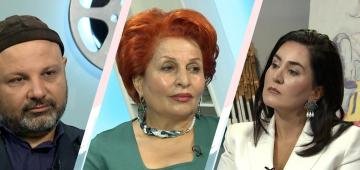 |
Jansem: The Master of the Live LineThis year marks the 105th anniversary of the birth of Jean Jansem, one of the outstanding figures of French modern art. The National Gallery of Armenia presented a large-scale exhibition entitled “Jansem: Master of the Living Line,” which includes more than 120 works by Jansem. The exhibition and Jansem’s art were discussed at “Artfocus” by the curators of the exhibition: Vigen Galstyan, head of the exhibition department of the National Gallery, and Nune Tadevosyan, head of the graphics department of the National Gallery. |
 |
Literature in one minuteTimes are changing, technologies are developing, even artificial intelligence is creating. Reader expectations are changing, the ways literature is presented and popularized are changing. How do literary critics respond to all this, how is it possible to present literature in one minute? Literary critics Hayk Hambardzumyan, Arkmenik Nikoghosyan, and writer and literary critic Jessah are interviewed on the “Parallel Readings” program. |
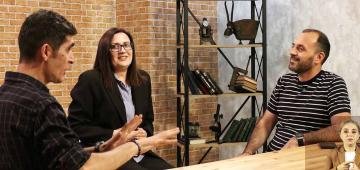 |
Complete Hakob Oshakan: issues and solutionsBoth during the Soviet years and during the period of independence, Hakob Oshakan's books were rarely published in Armenia. The "Diaspora" scientific and educational center has undertaken the publication of his complete works. Two volumes have already been published. Literary critics Hayk Hambardzumyan, Arkmenik Nikoghosyan and Knarik Abrahamyan talk about Hakob Oshakan's literature and this initiative in the "Parallel Readings" program. |
 |
Honored Ballet Artist Suzanna PirumyanBallet dancer Syuzanna Pirumyan has been an artist of the Alexander Spendiaryan Opera and Ballet Theater since the age of 18. She has been the theater's leading soloist for about twenty years. For years, she has been involved in the development of Armenian ballet and the education of a new generation. Art critic Anahit Margaryan's guest at "Artfocus" is Honored Artist, ballet dancer Syuzanna Pirumyan. |
 |
Vardan Grigoryan's historical novels and the modernity of the genreSeptember 5 marks the 75th anniversary of the talented historical novelist Vardan Grigoryan. He lived only 38 years, but his historical novels “Eternal Return”, “The Century of Destruction” and especially “Manya Ayrk” changed the description of the genre in our country and determined its further developments. What innovations did he bring and are his historical novels and the genre in general relevant? These questions are discussed in the “Parallel Readings” program with literary critics Hayk Hambardzumyan and Arkmenik Nikoghosyan. |
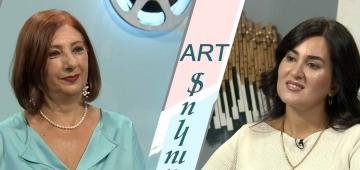 |
Hayrik Muradyan 120Hayrik Muradyan bridged time with his life and work, forming a living connection between generations and transmitting values that shape our identity. A concert dedicated to the 120th anniversary of Hayrik Muradyan, a connoisseur of Armenian song, performer of traditional songs, folklorist and ethnographer, will be held at the National Academic Theater of Opera and Ballet. Anahit Margaryan's guest at "Artfocus" is the president of the "Hayrik Muradyan" NGO, violinist, Narine Delalyan. |
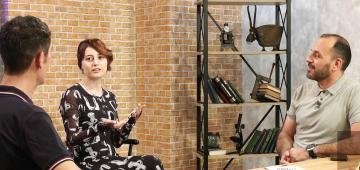 |
Does the city continue to read modernity?The 8th Yerevan Book Festival is underway. The issues of books, book publishing, and reading have become especially relevant these days. These issues were discussed in “Parallel Readings” by literary critics Hayk Hambardzumyan, Arkmenik Nikoghosyan, and the director of the Yerevan Book Festival, Ani Ghazaryan. |
 |
Henrik Edoyan: Why poetry?From "Reflections" published in 1977 to the latest collection "A View from Nowhere" published in 2024, the creative process of poet Henrik Edoyan stretches. How does the perception of poetry change over time, how does the poet change over time and does he change at all? On the occasion of the poet's 85th birthday, literary critics Hayk Hambardzumyan, Arkmenik Nikoghosyan and Henrik Edoyan talk about these issues in the "Parallel Readings" program. |
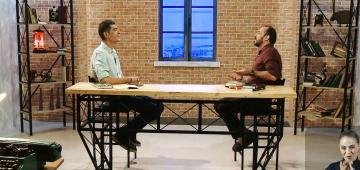 |
Birth and Farewell according to Hovhannes GrigoryanThe humor and self-irony characteristic of his poetry are always mixed with tragedy. His poems are loved by different generations of readers. On the occasion of Hovhannes Grigoryan's 80th birthday, his birthday and farewell poems are discussed in parallel by Hayk Hambardzumyan and Arkmenik Nikoghosyan. |
 |
Armenia in the spotlight at the Design BiennalePainting, graphics, photography, industrial, graphic and museum design. These are the directions where Kamo Nigaryan has left his mark. Armenia was in the spotlight at the Saint-Etienne International Design Biennale, held in France from May 22 to July 6. Curator, museologist, scientific secretary of the Museum of Literature and Art Marine Haroyan and one of the curators of the Armenian pavilion at the 13th Saint-Etienne International Design Biennale, founder of the “AHA” collective, art critic Nayiri Khachaturyan spoke about the exhibition and Kamo Nigaryan’s revolutionary approaches to art and museum design at “Artfocus”. The program was hosted by Anahit Margaryan. |
 |
"Golden Apricot" 2025For more than 20 years, the Golden Apricot has been the region's most influential and internationally recognized film festival. It screens films that represent the emotions, actions, and lives of people of different nations and faiths. Art critic Anahit Margaryan spoke with Karen Avetisyan, the artistic director of the Golden Apricot Film Festival, in Artfocus. |
